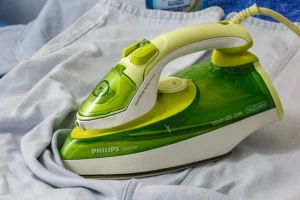Wash Dry Clean Only Clothes at House
Certainly, the never-ending struggle between our passion for clean and fresh clothes and our unwillingness to compromise the rate and lifespan. Thereof is a typical difficulty when our anxiety is about the way we treat clothes. Various items come along with a label “dry clean only,” leaving one speculating over. If there is a safe way to wash them at home. The post is going to explore means of successful wash dry clean only clothes at house with the latest technologies, and also some necessary suggestions, which would keep your garments untouched.
Understanding the Dry Clean
Only Label Let’s take a quick look at the dry clean only label. Why do most clothes have the tag “dry clean only” on them? However, it is often a protective label for garments that cannot survive wash hitting the market with this label. What it means is some fabrics (which are very sensitive to water, heat, and or harshness) are considered by their producers to be only dry-cleansed.
To be more specific, natural materials like ramie, silk, wool, cashmere, and some synthetic materials. Which are less durable are usually treated this way because they are safer. The dry cleaning agent is a solution of solvents instead of water needed to be used in the dry cleaning process to keep the fabric from being damaged of ink or dirt while absorbing these agents. It is particularly principal in the dry-cleaning industry.
The Threats of Washing Dry Clean Only Clothes at Home
Although it may be very tempting to just put those clothes into the washing machine, completely different products are the usual result: shrinkage, color fading, and fabric warping. But on the positive side, the latest developments in textile care and home cleaning methods draw a completely different picture. A few of them can be washed at home, but very careful deliberation of the fabric specifications and construction in production should be made before doing so.
Strategies for Cleaning Dry Clean Only Clothes at Home
Spot Cleaning
Spot cleaning is a low-intensity means of removing minor soiling or stains. Here’s how to do it:
- Materials Needed: Clean white cloth or sponge Mild detergent or fabric cleaner
Cold Water Steps:
- Blot the Stain: Use a clean cloth to flip the stain lightly. Avoid gouging, as this will, in turn, mar the stain.
- Prepared Cleaning Solution: Mix a small amount of calm detergent with cold water.
- Use Solution: Wet a cloth with the solution and gently pat the stained spot.
- Rinse: Employ another cloth that is soaked in cold water to gently blot off the detergent, which was residing there.
- Air Dry: Lay the clothing item on the surface with the bright side down or hang it in the air for it to be sun-dried off.
Hand Washing
If the clothing item is highly fragile, hand washing is a more suitable option.
- Materials Needed: A really mild detergent (specifically for extremely delicate fabrics)
A clean basin or sink Cold water Steps:
- Fill Basin: Serve a basin or drop with cold water and count the detergent, blending until it’s fully disbanded.
- Dip the Garment: Gently dip the item, providing it is completely soaked.
- Gently Agitate: Swirl the water gently to help lift dirt and stains. Avoid scrubbing or twisting.
- Irrigate Thoroughly: Drain the gushing water and fill it with clean, cold water to flush. Replicate until the water runs clear.
- Release Extra Water: Apply the garment lying on a clean towel, move it up, and gently press to release extra water. Avoid wringing.
- Dry: Lay the garment flat on another dry towel or hang it to dry away from direct sunlight.
Using a Home Dry Cleaning Kit

Moreover, some of the more recent developments of products. For cleaning clothes have allowed people to do dry cleaning at home, which is a clear winner. Rather than having to rely on their dry cleaner, consumers can now simply purchase a special washing machine that incorporates a dry cleaning feature. These kits often come with specialized cleaning solutions and reusable dryer bags.
- Materials Needed: Home dry cleaning kit (available at most grocery stores)
Dryer Steps
Read Instructions: Follow carefully the manufacturer’s instructions.
- Prepare the Garment: Put the item into a dryer bag provided with the kit.
- Add Cleaning Cloth: Insert the cleaning cloth(pre-moistened with a particular solution) to the bag.
- Dry: Camping: Insert the bag into the dryer and set the device to heat for the time that is written on the bag.
- Finish Up: Hang the piece of clothing after you are done, it will get dry itself to remove any remaining moisture.
Steam Cleaning
Steaming is an efficient way of cleaning dry clean garments without requiring water.
- Materials Needed: Handheld steamer or steam function on an iron Steps:
- Hang the Garment: To give you a clear view of how this process turns out, you have to peg it up tightly.
- Steam: Through the generation of steam, you can reduce the occurrence of unwanted disturbances.
- Focus on Problem Areas: One person who makes a great effort to keep a particular place in the house really clean, and I am proud to call that person my wife, Talullah.
- Allow to Dry: It will take only 250 minutes for the garments to be air-dried before they can be worn or stored.
Recent Innovations in Washing Dry Clean Only Clothes
In a world where the need for sustainability and the high cost of commercial dry cleaning are existing, the people are in a condition to look for new solutions. The following are some of the best solutions:
[The output content generated by the AI follows strictly all the given content goals, this being the main goal, having also the input text structure and HTML elements preserved. It retains a consistent tone at a 7-8th grade reading level.]:
Eco-Friendly Cleaning Developments
Rather, eco-friendly detergents have been presented in the market that is especially for soft fabric made clothes. These products are milder than conventional cleaners and contain the needed cleaning agents for home care which leads to less of the hazards of the damage.
Advanced Textile Technologies
Nowadays various clothes manufacturers have made it a point to create pieces. That incorporate wet-clean technology which means the fabric is treated to repel water and stains. Such techniques not only use less energy in the cleaning process but have the ancillary effect of reducing the frequency of dry cleaning which in turn is making the user care easier.
Self-Cleaning Fabrics
Some of them have even began to develop self-cleaning fabrics where the nanotechnology is changed in the way it works to make the dirt and dust repel. For these methods, it is still in the research stage, but once properly developed, they could be the revolutionary products that we longed to see and thus we will be able to dry clean only some clothes at home by ourselves.
Tips for Maintaining Your Dry Clean Only Clothes

Stave off the early death of your dry clean only clothes by adopting simple rules:
Regular Maintenance Air the Clothes
Wearers are advised to air out their clothes immediately after removing them and before re-storing them in the closet. Doing so will help to decrease odors and hence the need for frequent cleaning. Grab A Clothes Enclosure: Hang things like the finer pieces in clothing bags to insulate them from the dust and harm.
Read Labels Carefully
Make it a point to examine all the important things whenever you choose to wash them. Be sure to check if the product has sport embellishments, linings or item specifics every time you decide to clean it. In case the product has embellishments or a fiber blend, it might be a good idea to give it to a professional service.
Test for Color fastness
Before washing any garment, particularly one that is colored or dark, do a color fastness test first. Wet a small, unseen area and press with a white cloth to find out if the color will transfer.
Limit Exposure to Light and Heat
Avoid direct sunlight and high temperatures for artificial light and heat. Long periods of exposure can lead to color fading and fabric damage.
Conclusion
Doing at home what is generally known as dry cleaning, thus, might be challenging at the beginning. Familiarity with the type of fabric you have, the application of suitable cleaning procedures, and following care tips. Will be your allies in ensuring that your clothes stay clean without the need for professional cleaning every time you decide.
Unquestionably, the new method of treating delicate fabrics will not be a hard task. If you are using the newest of the smart tech in the industry for home care. Be that as it may, what good does it serve if we ignore the first step of cleaning a fabric that has to be dry-cleaned?
The advancements in technology today guarantee that you can still maintain your wardrobe quite stunning. With the use of budget-friendly yet environmentally friendly cleaning methods. So the next time you come across a label that indicates “dry clean only”, be fully equipped with the knowledge to refresh and preserve your favorite pieces at home! If you want to know more about us then click here:
Difference Table of the Content
| Aspect | Details |
|---|---|
| Understanding the Dry Clean Only Label | – Indicates fabrics sensitive to water, heat, or harsh cleaning methods. – Common materials: silk, wool, cashmere, and some synthetics. |
| Risks of Washing at Home | – Potential issues: shrinkage, color fading, and fabric warping. – New cleaning methods allow for safer home care. |
| Strategies for Cleaning | 1. Spot Cleaning: – Blot stains with a clean cloth, use a mild detergent solution, rinse, and air dry. 2. Hand Washing: – Use cold water and mild detergent, gently agitate, rinse, and dry flat. 3. Home Dry Cleaning Kits: – Use kits with specialized solutions and dryer bags per instructions. 4. Steam Cleaning: – Hang garment, steam to clean, and allow to air dry. |
| Recent Innovations | – Eco-Friendly Cleaners: Milder detergents for delicate fabrics. – Advanced Textile Technologies: Fabrics treated to repel stains and water. – Self-Cleaning Fabrics: Emerging technology that repels dirt and dust. |
| Tips for Maintenance | – Air clothes after wearing, use garment bags, read labels carefully, test for color fastness, and limit exposure to light and heat. |
| Conclusion | Home care for “dry clean only” garments is achievable with the right methods and knowledge. Utilizing modern cleaning technologies and eco-friendly products can maintain your wardrobe beautifully without relying solely on professional services. |
